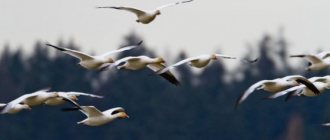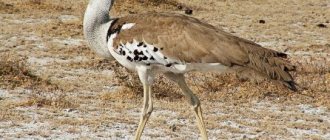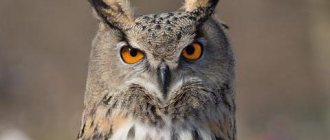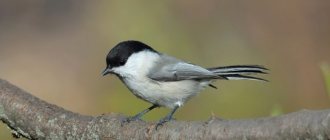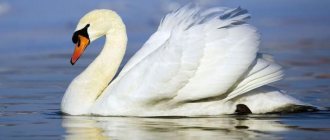The term “migration” comes from the Latin word “migratus”, which means “to change”. This word has a special meaning when it refers to animals. Migration is the movement of animals from one region (or habitat) to another. It occurs during certain periods of time or seasons of the year. Animals migrate to reproduce, grow, search for food, or avoid cold weather. For many birds, migration occurs twice a year. They fly away in the fall and return again in the spring.
What makes a bird, a bird?
All types of birds have feathers. There are other characteristics that are common to the class of birds, but feathers are the only feature that is completely unique to these animals. Many may say that flight is what makes birds special, but did you know that not all birds fly? Emus, kiwi, cassowaries, penguins, ostriches and rheas are birds that do not fly. Flightless birds such as penguins are excellent swimmers underwater.
Birds have many interesting adaptations that allow them to fly. Light but strong bones and beaks are an adaptation to reduce weight during flight. Birds have unique eyes, ears, legs, and can also build nests. Some species are capable of making beautiful sounds.
Flight
Since during the flight birds are not always able to find normal food for themselves, before setting off, they begin to gain weight intensively: therefore, if birds migrate over medium distances, they increase their weight by 15-25%, those that fly very far, they recover by fifty and even one hundred percent.
Before setting off, the birds gather in flocks and fly away from their homes, mainly on clear moonlit nights. It is interesting that there are birds that fly only at night (woodcocks, quails), and others that are able to continue their journey regardless of the time of day (geese, ducks, loons).
Birds prefer to fly mainly in a wedge: this gives them the opportunity to avoid vortex-like flows of air masses that arise due to the movements of the wings of birds located on the side. Thanks to the air currents arising from the movement of the wings of birds flying in front, additional lift is created for those flying behind, which allows birds to save about twenty percent of energy.
The birds flying in front are the strongest members of the flock, and the first bird also has a huge responsibility: being a guide, all its senses and nervous system are constantly tense. Naturally, she cannot remain in this state for long, and when she begins to show the first signs of fatigue, she is immediately replaced by another.
Birds fly quite quickly: small individuals are able to cover distances at a speed of about 30 km/h, large ones - about 80 km/h, some species can even accelerate to three hundred kilometers.
Birds prefer to move at an altitude of one to one and a half kilometers above sea level. This gives them the opportunity to fly at higher speeds than usual: at this altitude the air is very thin and has less resistance. But in some cases, birds are quite capable of descending to a height of up to one hundred meters, or flying up to thousands of kilometers above sea level (for example, bar-headed geese, on their way to India, fly over the Himalayas, whose height is almost 9 thousand meters).
In warm weather, birds fly much faster and are able to fly about 200 km without stopping. Much in this case depends on the movement of air masses: they can either interfere with the flight of birds or facilitate them (when moving with a tailwind, the flock moves faster).
Seasonal migrations of birds over long distances consist of several stages, between which they make rest stops. Some birds fly almost non-stop; for example, a woodcock is quite capable of flying about 500 kilometers in one night.
But the smaller the birds, the more often they stop, making rest near water bodies, while they take a lot of time to rest, and therefore they spend only a little more than an hour a day on the flight. If necessary (for example, crossing a sea or ocean), they are quite capable of continuously flying from 70 to 90 hours, covering a distance of 4 thousand km.
Why do birds migrate?
Many birds seek out places that are warm, have an abundance of food, and have the opportunity to breed and protect themselves from predators. In the Southern Hemisphere, especially in the tropics, the climate is warm enough that birds can find ample food throughout the year. Steady daylight gives them plenty of time to eat every day, so they don't have to fly off to find food.
Conditions in the countries of the Northern Hemisphere, for example, in Belarus, Russia, Ukraine, etc., are different. During the long days of the northern summer, birds have more time to feed their chicks with abundant insect populations. But as the days shorten in the fall and food supplies become scarce, some birds migrate south to so-called “warmer climes.” However, not all birds migrate. There are species that manage to survive winter by remaining in the Northern Hemisphere. For example, pigeons, crows and blackbirds remain in their native habitat all year round.
Groups of birds by flight distance:
- Residents are non-migratory birds that remain in their homeland all year round.
- Nomadic birds are birds that leave their nesting areas and are able to move short distances.
- Migratory birds are birds that fly south, to warmer regions, in winter.
Reasons for returning
But birds return home for a completely different reason: during the winter, a huge number of birds accumulate in wintering areas, flying here from all over the planet. If there is still enough food for such a number of birds, then it will no longer be possible to feed the chicks: if each pair of birds builds a nest and produces offspring, the number of individuals in the area will increase sharply. Even if the first brood is lucky, then the next one will not have enough food, and the third one will definitely die of hunger, not to mention the fact that the number of birds by this time will be so large that there will be nowhere to even build nests.
Having spent the winter in favorable conditions, obeying the instinct of procreation, the birds return home: by the time they arrive, it is already warm here, food has appeared, and there are also equipped places for nesting.
Birds return no earlier than spring arrives in their nesting areas: if it is delayed too much, the earliest birds may arrive even forty days late. For example, if a rook, when flying to warm regions, can cover about forty kilometers in an hour, then in case of cold, it flies the same distance in a day.
When do birds migrate?
Each species migrates at certain times of the year. Some birds are highly irregular in their migratory patterns. Some species begin their southward migration in early July, while others do not migrate until the weather becomes too cold or food is no longer readily available. Various studies show that shortening daylight hours stimulates the migration of many birds.
Routes
If you look at a map where the routes of birds are marked with lines, you can see that birds do not change their routes, and move along the same path from year to year. The only thing is that young birds tend in some cases to look for other places for wintering than their parents indicated to them, but when they make a choice, they form a map in their memory, creating a link to the wintering and nesting places, after which they no longer go astray.
How exactly they do this still remains a mystery and is the subject of research by many scientists. Definitely, when moving, they are guided by the Sun, Moon, stars, landscape, the sound of waterfalls, and the Earth’s magnetic field. One of the few known moments when they are unable to clearly determine the direction is the disappearance of the month from the sky, when the sky is covered with clouds - in this case, the migration of birds is suspended.
This ability of birds to move accurately on a map can hardly be explained only by the genetic program embedded in them: birds clearly have the ability to recognize places thanks to their memory and process this information. For example, while tracking the migration of birds of prey, it was recorded that older birds use the wind much better during flight.
But young birds, until they get used to the route they follow, are like pioneers without a map. During the flight, they learn to associate various features of the landscape with the strength and direction of the magnetic field of our planet: depending on the latitude, the strength of the field changes, which makes it possible for the birds to determine whether they have arrived at their destination or not.
Where do the birds fly?
Many species migrate long distances. The most common picture is that the birds migrate to the temperate or arctic regions of the Northern Hemisphere in the spring to breed, and then fly south to warmer regions of the world in the fall.
Migrating birds follow specific routes. They tend to avoid mountains or large hydrosphere objects that might block their path.
For soaring birds such as ospreys, eagles, vultures and hawks, these routes rely on air currents to allow them to glide above the ground. They use hot air, known as thermals, to take off. By planning, they save the energy needed for long flights.
Habitat
Even before the onset of cold weather, birds gather in flocks and prepare for a long flight. Watching flocks of geese in flight, comparing their species, where they live in the summer and where they fly to spend the winter, one can trace the following trend:
| Goose breed | Habitat | Wintering |
| Gooseberry | Taiga and tundra of Eurasia | Mediterranean and Black Sea coasts, southeastern China and Japan, Central Asia |
| White | Arctic coasts, high latitudes of North America, eastern Eurasia - Chukotka, Wrangel Islands | Colombia, Canada, UK, California (USA) |
| Grey | Temperate climate, starting from Eurasia, ending with Lapland, the Black Sea region, the Caspian Sea, southern Siberia | Asia, southern Europe, northern Africa |
| White-fronted, arctic | Tundra of Eurasia and America | India, Japan, Korea, China |
| Sukhonos | East Asia | East Japan, China and Korea |
| Beloshey | Alaska | Commander Islands, Kuril Islands |
| Lesser Lesser Lesser Lesser Lesser Lesser Lesser Lesser Lesser Lesser Lesser Lesser | Forest-tundra of Russia | Azerbaijan, Greece, China, Romania, Bulgaria, Hungary, Balkan Islands, Black Sea and Caspian coasts |
| Mountain | Kyrgyzstan | India |
How do birds feed during migration?
Some birds eat regularly during migration, while other species store special high-energy fat in their bodies before long flights. This allows you to not think about food for several weeks.
Most birds that need food during migration fly at night in small flocks. They feed and rest during the day to avoid some predators.
Flight limitations
Speaking about how wild geese fly, it is impossible not to mention that even this natural ability has some limitations:
- Despite the fact that birds spend most of their time on land, they also feel great in water, but it is difficult for them to take off from its surface, since they need a short run before flying.
- The ability to fly is lost when the feathers begin to molt, which lasts about six weeks. During this period, on average, 20 days the geese do not fly at all and try to hide in quiet, remote places. This period happens twice a year.
- During the day, geese prefer to rest; the best time to fly is at night.
- Males fly less during the period when they need to protect females hatching goslings.
How do birds navigate?
Navigation is complex because it requires birds to understand three things: their current location, their destination, and the direction they must follow to get there.
Some birds use the Sun and stars for navigation. Others navigate by natural features such as rivers, mountains or coastlines. Some birds can even use their sense of smell. Although birds are also capable of moving on cloudy days and flying across the ocean, where there are no clear landmarks. So how do they do it?
Scientists have concluded that birds sense the Earth's magnetic field thanks to magnetoreception. Birds' beaks contain something called magnetite, an iron-containing mineral that acts as a compass. Other scientists believe that birds can see the magnetic field with their own eyes. Science doesn't yet know everything about bird orientation, but they probably use multiple navigation methods.
Domestic relatives
There are different opinions about whether domestic geese fly or not. Some people believe that this breed is specially raised and fattened so that it cannot fly at all. Others argue that it’s just a matter of lack of training for flying. Both sides are partially right, since due to changes in lifestyle, the new generation is gradually erasing, even at the genetic level, those abilities that they do not use. Domestic geese receive more food; their bodies are not as volatile due to the weight of their bodies.
Nevertheless, domestic geese, although not so high and far, still fly, and can even fly away from home, as in the fairy tale about Nils’s journey with the geese. Therefore, poultry farmers usually trim the feathers of their pets, which are responsible for keeping the bird in the air at a certain height.
Advice: you should trim the feathers only of adult geese that have previously experienced molting three times.
Source: kotofeev.ru
Why do birds fly like a wedge?
It is not by chance that a flock of birds flies in a wedge. Large birds such as geese and ducks form a wedge to reduce air resistance. The wedge allows flocking birds to fly further and more efficiently than birds flying alone.
When flying in a wedge formation, efficiency increases by 70%. The lead bird and the trailing wedge have the hardest time, while the birds in between benefit from the wingbeats of other birds.
In addition to improving flight, this method is also useful for communication between birds. Wedge flight allows birds to fly close to each other, as well as to hear and see their relatives. They communicate information to each other (via sounds) and can stick together.
Data
It is obvious that geese cover very long distances when they fly. This is confirmed by a recorded fact: a flight covering a distance of up to ten thousand kilometers.
To understand at what altitude they usually fly, we need to look at the facts again. The record height was recorded at more than eleven thousand meters during the flight of bar-headed geese across the Himalayas. Geese, when they fly, are usually accustomed to a height of eight meters, since at such a distance from the earth's surface the density of the atmosphere is less and the oxygen in it is rarefied. The peculiarity of migratory birds is precisely to obtain the energy necessary for flight from rarefied atmospheric air. The weather also affects the flight altitude. It has been noticed that during bad weather, flocks of geese fly much lower than when it is clear.
How fast do these beautiful birds move? It is known that geese usually fly at very high speeds - up to eighty kilometers per hour.
These birds sometimes spend up to ninety hours without rest. For example, white geese, when migrating, fly, covering a distance of about three thousand kilometers in sixty hours, that is, in a day they can cover a distance of about five hundred kilometers. It’s hard to even imagine what unique properties of the body they must have!
The danger of migration
Sometimes birds must fly through harsh habitats, such as deserts where there is little water or oceans where there is no place to rest and feed.
Even if they find food and water, the birds need to land on the ground, where they risk becoming prey.
There may be many predators along the migration route. Depending on their size, migrating birds become prey for wild cats, foxes, wolves, humans and other animals. Some birds may be attacked by larger bird species while in flight. Sometimes difficult weather conditions make the flight difficult and even lead to death. It happens that birds collide with airplanes, which is dangerous both for themselves and for the airplanes.
Why do you need flights?
Scientists, trying to establish why geese fly away for the winter, agreed that the reasons are as follows:
- Lack of food: due to the onset of cold weather, plant food necessary for natural survival disappears.
- Freezing of water bodies: geese are waterfowl, although they spend less time in the water compared to ducks or swans, for example. However, the constant absence of a reservoir for wild birds of this breed will be unacceptable.
In support of these arguments, one can cite the opposite example associated with the Nile goose, which lives in a warm climate with a sufficient amount of plant food. This species does not need to migrate, because it is provided with everything it needs all year round.
How do ornithologists study birds and their migration?
Bird ringing is one of the methods used to study them. Scientists place a small, individually numbered metal or plastic ring on the bird's leg or wing. They also use special nets known as mystic nets as a way of capturing wild birds for research.
This way, birders can capture the same bird multiple times, measure and weigh it, and collect other important information over long periods of time. Sometimes scientists use satellite data to track bird migration routes.
Fascinating facts
- The Arctic Tern has the longest known migration route. It flies about 70,000 km per year between its breeding grounds in the Arctic and its winter grounds in the Antarctic.
- Birds can fly at speeds from 30 to 80 km/h.
- Large birds fly faster than small species.
- In 10 hours of flight, some birds cover about 650 km.
- Radar surveys show that most flights occur at altitudes of less than 3 km, but some birds have been recorded at altitudes greater than 8 km.
- Birds that fly long distances fly at higher altitudes than those that fly short distances.
